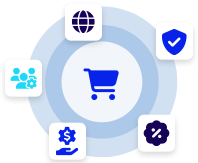Headless commerce refers to a modern approach in e-commerce architecture where the front-end presentation layer (the “head”) is decoupled or disconnected from the back-end commerce functionality. This separation allows greater flexibility and agility in delivering online shopping experiences across various digital touchpoints.
In headless commerce, the traditional tightly integrated e-commerce platforms, where the front-end and back-end are interdependent, are replaced with a more modular architecture. Here, the back-end infrastructure that handles functions like product catalog management, order processing, and payments operates independently from the front-end interface visible to customers.
Technology and Architecture
Headless commerce leverages API-driven technology to enable this decoupling. APIs (Application Programming Interfaces) serve as the bridge between the back-end commerce systems and multiple front-end channels such as websites, mobile apps, IoT devices, and even voice assistants. This architecture allows businesses to adapt quickly to changing market demands and adopt new technologies without overhauling their entire e-commerce infrastructure.
Benefits and Advantages
The key benefits of headless commerce include:
- Flexibility: Businesses can innovate and launch new digital experiences more rapidly since changes made to one channel do not affect others.
- Scalability: The modular nature of headless architecture supports scalability effortlessly, accommodating growth and spikes in traffic without compromising performance.
- Personalization: Tailoring customer experiences becomes more granular and effective as content and functionality can be optimized independently across different touchpoints.
- Integration: Headless commerce facilitates seamless integration with third-party services and platforms, enhancing functionality and expanding market reach.
Implementation and Platforms
Enterprises and B2B businesses find headless commerce particularly advantageous due to its ability to integrate with existing enterprise systems and legacy software. Implementing headless solutions often involves selecting a back-end commerce platform that supports robust APIs and choosing front-end frameworks or CMS (Content Management System) tailored for specific digital channels.













